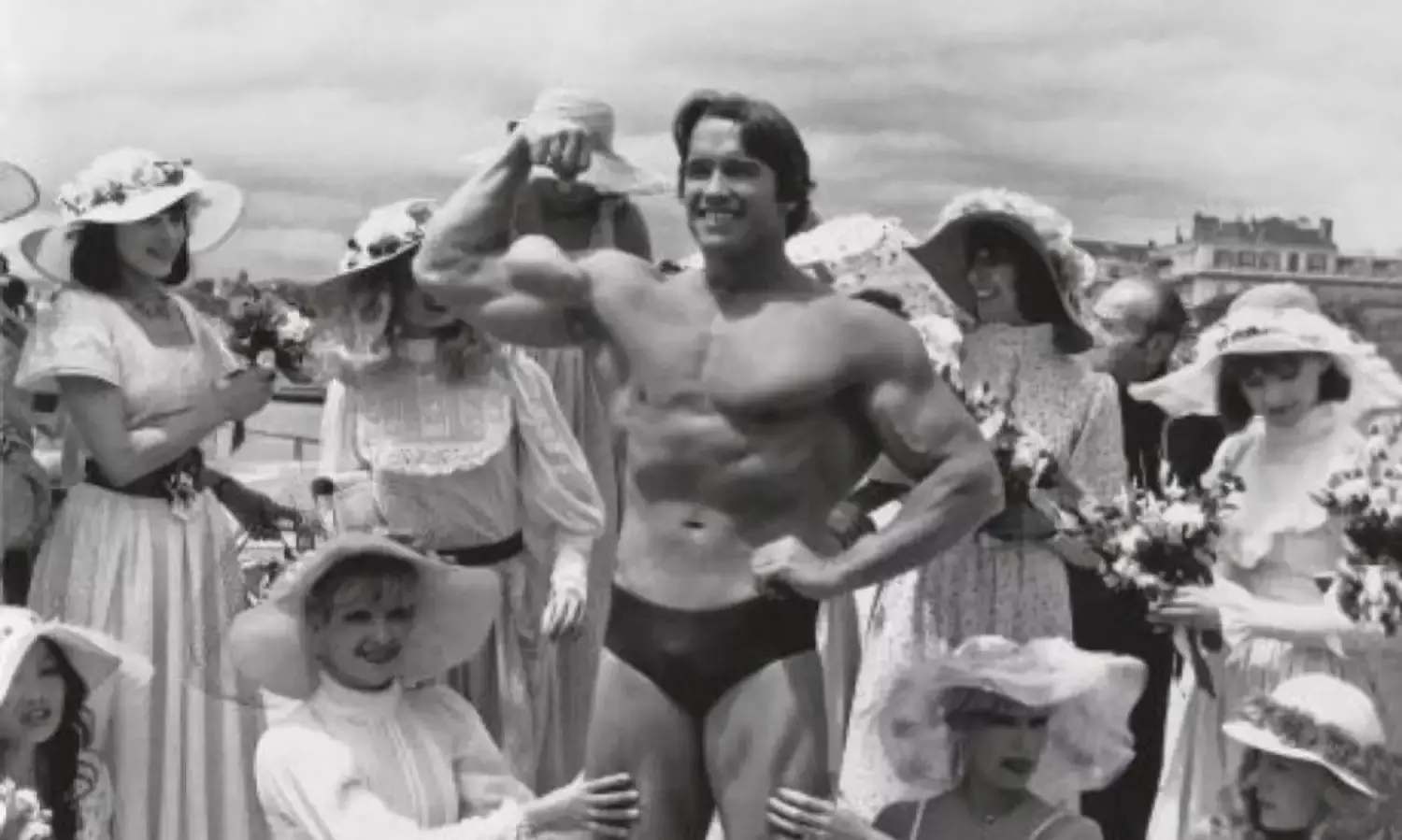Were Our Ancestors Fitter Than Us?
If Arnold Schwarzenegger were to arm wrestle a neanderthal woman, who would win?;

When it comes to women and weights - a majority of (unsolicited) comments fall into one of two camps. “It might be okay right now, but you’ll have hip and knee problems when you’re old” is one camp - comprised mainly of older aunts and uncles nursing inflamed knees and blaming it all on ‘over exercising.’ The other lot wonder why you don’t look like a bodybuilding caricature, with “you don’t look strong” offered as a compliment of sorts, given our very narrow skinny-obsessed beauty standards.
To the general population - being able to lift anything heavier than an overstuffed suitcase is an indication of strength (and as your uncle-with-a-walking-stick will warn you -- doing it too often is going to spell geriatric ruin). Oh, and this strength should also give you giant, bulging muscles.
We could devote an entire article to busting the above myths, but that’s boring and overdone, so as quick recompense, think about elite athletes. Take professional olympic weightlifters - an overwhelming majority of whom retire from the sport without any long term consequences, and look more ‘toned’ and ‘lean’ than they do bulky and huge.
Today’s Olympic athletes may seem to possess herculean strength when compared to us hunched-over-our-desks-all-day mortals, but science indicates that when it comes to our ancestors - what we consider elite strength and fitness was the stuff of average joes and janes.
It seems that if even the strongest amongst us modern post agricultural revolution humans were to meet one of our hunter gatherer ancestors - she’d be able to kick us to the ground, fling us around, and effortlessly sling us over one shoulder and run off into the sunset with her eyes closed. All that with a ‘lean’, ‘toned’ body of an athlete - which eludes a majority of us no matter how many spinning classes we attend or burpees we clock in under a minute.
Several studies corroborate the fact that our ancestors were far stronger than us, and that human strength and fitness has decreased so dramatically in recent years that even the fittest among us wouldn’t be able to keep up with the laziest of our ancestors. A Cambridge University study, ‘From athletes to couch potatoes: humans through 6,000 years of farming’ concludes that when hunter gatherers transitioned to settled agricultural societies, humans lower limb strength and overall mobility decreased (and this decrease was even more pronounced in women).
This loss of strength and mobility is directly linked to our sedentary lives, and in complete contradiction to what the human body was designed to do -- to move; to forage, hunt, run, jump, squat, push, pull, duck, and cover huge distances while doing all the above (and also carrying a ton of weight).
Studies say that given spiked running shoes, indigenous Australians could have beaten today’s 100 and 200 meter records - no training needed; Tutsi tribals could have easily broken the current high jump record; and perhaps even the strongest man in the world (we’re looking at you Brian Shaw) would have struggled in an arm wrestling match against a neanderthal woman.
A book by anthropologist Peter McAllister, Manthropology: The Science of the Inadequate Modern Male, analyses fossilised footprints left behind by six male Australian Aborigines some 20,000 years ago - and concludes that one of them was running at 37 kph, only 5 kph slower than Usain Bolt was traveling at when he ran the 100 meters in world record time of 9.69 seconds in Beijing. This is without hours of deliberate training or spiked running shoes; this was barefoot and in soft mood. Given modern conditions, the same man - dubbed T8 - could have, says McAllister, reached speeds of 45 kph.
The book also refers to Tutsi initiation ceremonies from just a century ago. Young men had to jump their own height as part of the ceremony - with some of them jumping as high as 2.52 meters; the world record is 2.45 meters.
Or take studies that show that prehistoric women had much stronger arms than today’s elite rowers. Research shows that while the arm bones of women from the neolithic to the late iron age showed variations in strength, they were stronger than those of rowers, football players, and non-athletic women for their left arm, and the latter two groups for their right. Neolithic women had arm bones about 30% stronger than non-athletic living women.
The research only corroborates what common sense tells us -- that the human body did not evolve to sit hunched over, scrolling through Instagram all day. Our effort -- and it is quite an effort -- to incorporate movement and fitness by going for a run, playing a game of football, or smashing leg day at the gym, tries to compensate for the lack of activity built into our otherwise very sedentary lives.
The elite fitness level of today is what our bodies were designed for -- and if that fitness level is a combination of strength, mobility and endurance, it’s not going to wreak havoc on your granny hips, and in fact, will probably give you the bone strength and joint health you need to remain active even when you’re grey and resisting an old age home. Nor will it make you look like Arnold Schwarzenegger, who by the way, would also probably lose that arm wrestling match against the neanderthal woman who just beat Brian Shaw.

